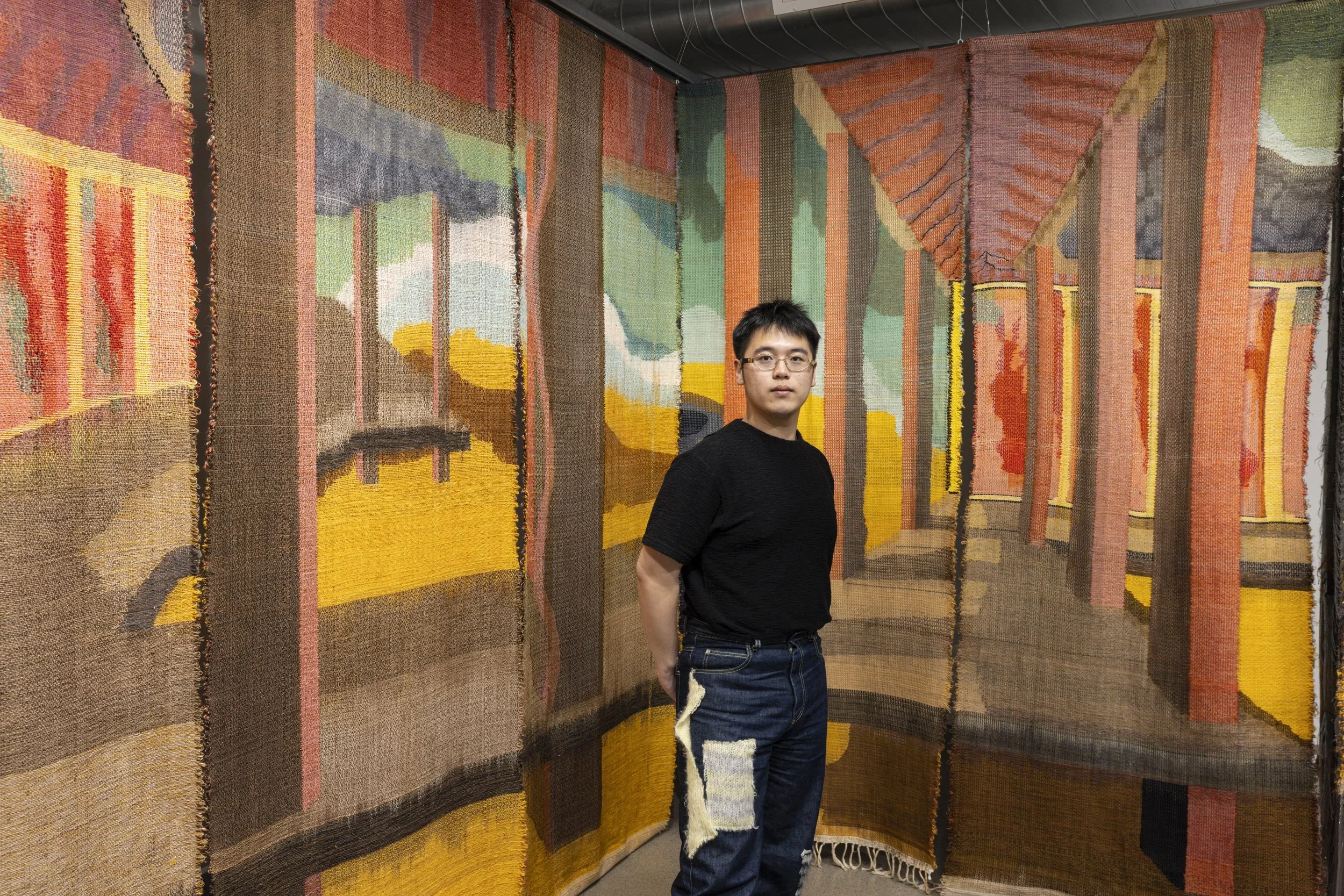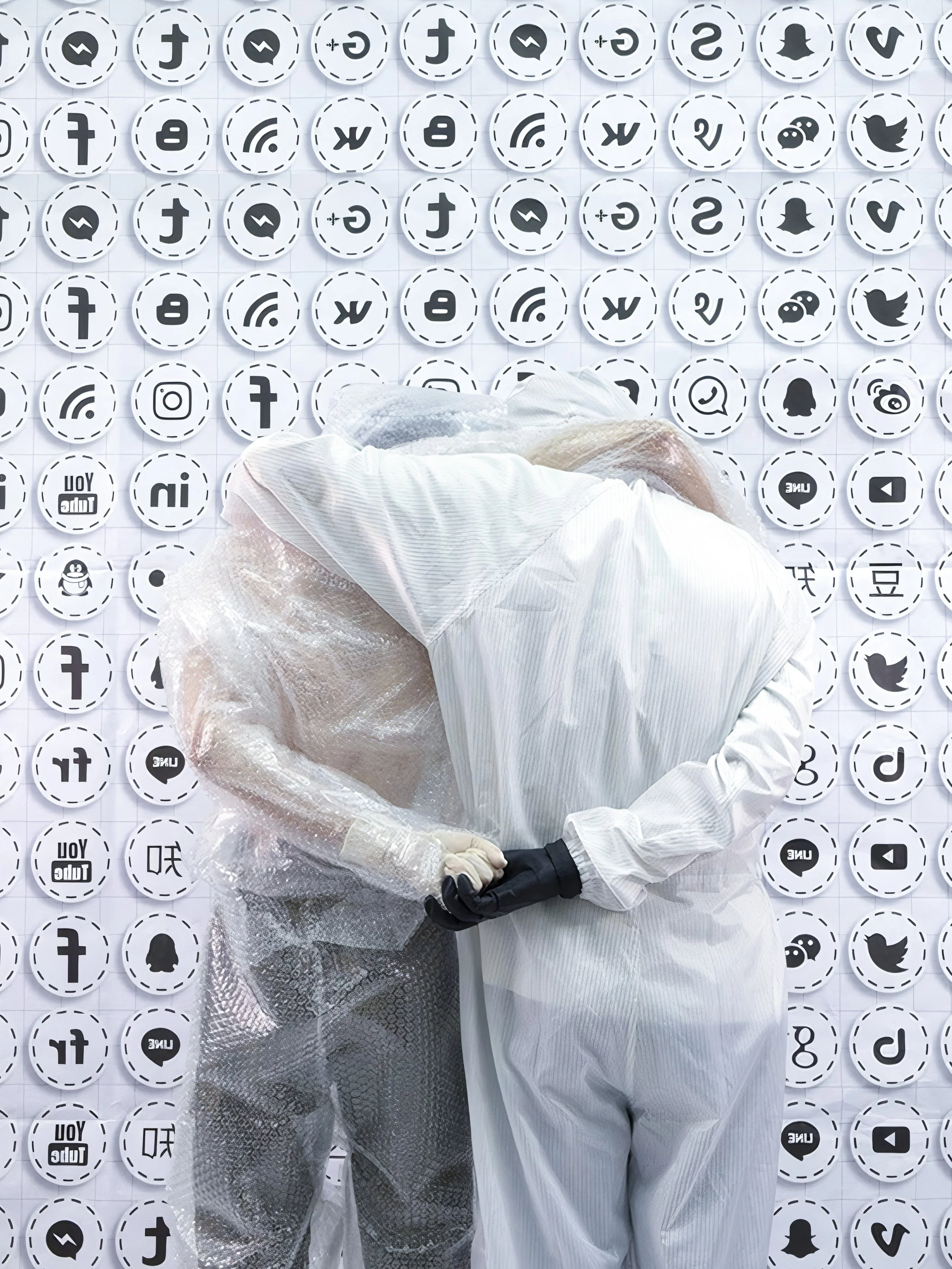10 Questions with Paulette Gutierrez
Paulette Gutierrez’s work can be identified by intricate, bold-colored organic shapes. Gutierrez is a Mexican American artist born and raised outside of Detroit, Michigan. She started painting in acrylic as a hobby at the beginning of high school, and by the end of high school, she had moved on to oil and decided that creating was one of her passions. She went on to study zoology and studio arts at Michigan State University. She had discovered a love for ceramics in a community college class, which she then rediscovered again at MSU. No matter in which medium Gutierrez is working in – painting or ceramics – she is heavily influenced by the biology that she sees in her other major, zoology.
Paulette Gutierrez - Portrait
ARTIST STATEMENT
Gutierrez is interested in using the organic material she encounters while studying biology as inspiration for her work. The intricacy of organic materials and organisms, when looked at closely, serves as the substance to abstract. Gutierrez likes to experiment with these abstracted elements in color, movement, composition, and layering. Her practice involves total freedom from the mind by solely using her intuition. The process is a meditative one, connecting and bringing out her higher consciousness. The result is a body of work with intricate layers of color, shapes, and patterns. The ultimate goal is to remind anyone who views her work that we are all interconnected with nature, even with the most minuscule organism.
La Célula que Explota, mixed media, 11x15, 2022 © Paulette Gutierrez
INTERVIEW
First of all, tell us a little more about yourself and how did you begin making art?
I grew up fascinated by watching a show where a guinea pig, turtle, and duckling saved the day by helping animals in distress. The Wonder Pets inspired my love for nature and animals and instilled in me the importance of the smallest to the largest of creatures. That was my first passion. I was always artistically inclined as a child, but I only saw it as a hobby I really enjoyed. It wasn't until I went through a hard period in my life, where I stopped making anything, that I realized how much I loved it when I started again during the pandemic. Another passion was discovered.
You studied zoology, which seems to have a profound impact on your practice as an artist. How do you balance such different fields?
To me, it is simple to balance both fields. I like the structure that zoology provides in my life. It is a profession with schedules and deadlines, and where people depend on you to do your part. A profession solely in making art with you as your own boss makes it a little easier to take extra vacation days. I am a person that values freedom and spontaneity, which comes at a cost sometimes. Zoology helps me with staying on track professionally. As much as zoology is a subject that requires more of your right brain, there are many images that I see that I must reproduce with paint or clay when I get home. It is wonderful not to feel the pressure of art being my primary source of income. There are no thoughts of doubt as I choose a color, shape, texture, or where to place a stroke of paint.
Venus Body, Terracotta ceramic vessel, 2023 © Paulette Gutierrez
You have been painting since high school and, more recently, also introduced ceramic into your practice. How do these two different mediums complement each other, in your opinion? And what is your preferred medium of choice, the one you are more naturally drawn to?
I took ceramics at a community college only because I had already taken all the drawing and painting classes offered. Ceramics was the only art class left that I could take. I thought that the mediums were too different for me to enjoy. I already have trouble conceptualizing ideas because I can't see images in my mind, so I doubted that my brain would be able to conceptualize something in 3D. Thankfully I didn't struggle any more than I already do with conceptualizing.
I never knew that I was missing something in my work until I tried ceramics. Painting allows me to create space, texture, and movement but what about volume? Volume was an element I couldn't utilize in my work, which is how the two complement each other. There are times when I only want to work in 2D and work with layering shapes and colors. Other times I want to work in 3D to emphasize movement through volume and weight. They complement each other because if one medium doesn't allow me to utilize elements efficiently, the other medium can. I do find myself more drawn to ceramics these days.
As a multidisciplinary artist, what is your routine when working? Do you have a specific one, or do you work more spontaneously?
It honestly depends on what classes I'm taking at the time if I'm painting or working with clay more. For example, last semester, I had two ceramics and no painting classes, which meant I was living and breathing ceramics, barely painted.
Los Regalos de Melón, Oil on canvas, 18x24, 2023 © Paulette Gutierrez
On that note, can you tell us about the process of creating your work? What aspect of your work do you pay particular attention to?
For anything that I make, whether it be by painting or ceramics, it is a free process. I struggled with never being happy with my work, picking it apart to find the flaws. I studied and painted realism, thinking that if I couldn't get every detail correct, then it wasn't a good piece. The art that I was making was lifeless and emotionless–that's not to say that realism is that way– it wasn't until I started working with an abstract that I could let go. I let my intuition make the decisions. I don't think and analyze when I work; I just do.
Where do you find inspiration for your work?
I find inspiration from my biology labs, biology internships, as well as other artists that produce biomorphic work. I like to have several inspirational pictures for a piece because I like to layer lots of colors, shapes, and elements. I find inspiration in cells and organic structures, shapes, and patterns that make up larger life forms.
Is there a piece you consider a "breakthrough" in your career?
I don't have a singular piece that I consider a breakthrough but instead a collection of pieces all made in a time span of 2 or 3 months. I discovered my love for abstracts in a college class called Color and Design, in which we focused on color theory and the effect on the placement of shapes and lines. We could not create anything representative; it had to be an abstraction. Those pieces were the first pieces I made that felt like me.
Entrelazadas, Terracotta ceramic sculpture, 2023 © Paulette Gutierrez
Entrelazadas, Terracotta ceramic sculpture, 2023 © Paulette Gutierrez
Do you have a role model that you've drawn inspiration from when creating your art?
I do not have a role model that I draw inspiration from when creating, but I recently came across a ceramic artist that bases their work in biomorphic forms that I've been obsessed with. Sara Catapano's work takes organic shapes to a new level, often mimicking plants or organs, sometimes a mix of both.
What are you working on now, and what are your plans for the future? Anything exciting you can tell us about?
I am working on incorporating beading and stitching into my paintings, as well as experimenting more with clay and solidifying my style in ceramics.
And lastly, what is your biggest career goal or dream?
My biggest career goal and dream is to have an impact in both of my fields. I want my efforts in biology to be translated and backed by my art, provoking the audience to be conscious of how each life form has the same fundamentals. All life on Earth is one and the same on some level. As a society, I believe we tend to forget that, often feeling a sense of superiority and putting our needs above all else.
Artist’s Talk
Al-Tiba9 Interviews is a promotional platform for artists to articulate their vision and engage them with our diverse readership through a published art dialogue. The artists are interviewed by Mohamed Benhadj, the founder & curator of Al-Tiba9, to highlight their artistic careers and introduce them to the international contemporary art scene across our vast network of museums, galleries, art professionals, art dealers, collectors, and art lovers across the globe.





















